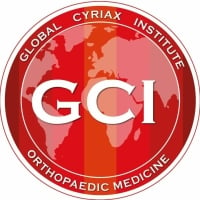Putting labels on patients...useful or useless?
The Advantages and Disadvantages of “Labelling” Patients with Musculoskeletal Disorders
In clinical practice, assigning a diagnostic label to a patient with a musculoskeletal (MSK) disorder is a common step in the management process. While diagnostic labelling has its benefits, it also carries potential drawbacks that can influence a patient’s physical and psychological well-being.
Advantages of Labelling
- Clarity and Communication: Providing a specific diagnosis can help patients understand their condition. It facilitates clearer communication between healthcare providers, ensuring consistent care across settings.
- Guidance for Treatment: A label often leads to more structured clinical decision-making. Evidence-based guidelines are typically diagnosis-specific, allowing clinicians to implement appropriate interventions more efficiently.
- Validation of Symptoms: For many patients, receiving a label validates their pain or dysfunction, reassuring them that their symptoms have a recognized cause and are not being dismissed.
Disadvantages of Labelling
- Psychological Impact: Labels can inadvertently lead to fear, anxiety, or catastrophizing—especially when the terminology used sounds severe (e.g., “degeneration” or “tear”). This can lead to maladaptive beliefs and increased disability.
- Over-Medicalization: Not all MSK symptoms require a formal diagnosis or medical intervention. Labelling benign or self-limiting conditions may encourage unnecessary treatments, imaging, or procedures, and shift focus away from active self-management.
- Identity and Chronicity: Some patients may internalize a diagnosis, identifying with the label long after the tissue has healed. This can perpetuate symptoms and hinder recovery, particularly in chronic pain scenarios.
Conclusion
While labelling can support diagnosis and management, clinicians must use diagnostic terms thoughtfully. Labels should be accurate, explained clearly, and presented in a way that empowers rather than limits patients. Balancing medical clarity with psychological sensitivity is key to optimizing outcomes in musculoskeletal care.
